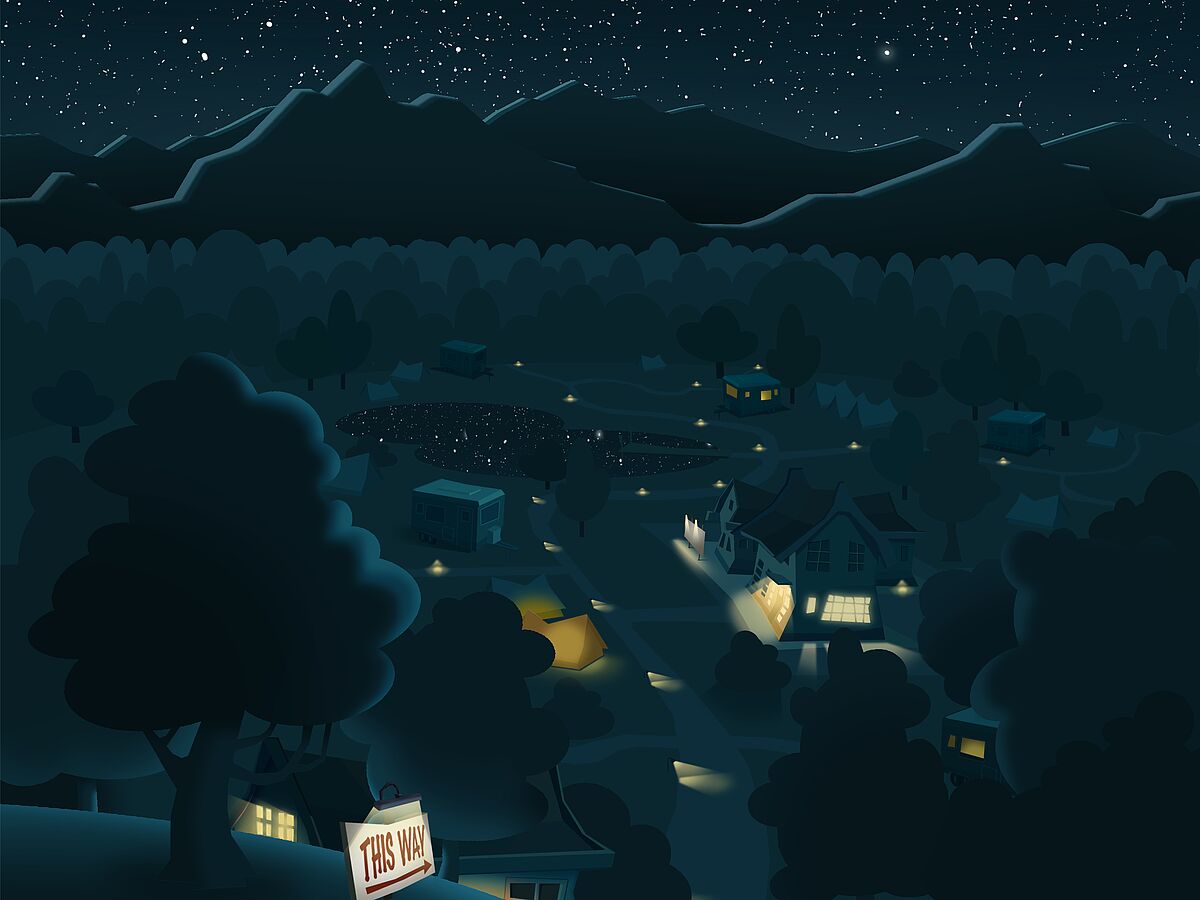Fairy lights, streetlights and advertisement displays: Especially in December we light up the dark season with all sorts of exterior lighting. It is a known fact that this illumination not only creates a seasonal atmosphere, but also has negative consequences for man and nature. An international research team, which has worked together for four years as part of the European "Loss of the Night" network, is now for the first time publishing practical guidelines for exterior lighting. They are intended to contribute to the sustainable use of light in our cities – for the benefit of humans and the environment.
"Light has effects," says coordinator of the network Sibylle Schroer, "on plants and animals as well as on us humans." Even small quantities of artificial light at the wrong time can disturb the inner clock, the release of hormones or even interfere with whole ecosystems. Predator-prey relations get mixed up, and nocturnal species increasingly lose their habitats. "In the long term, this can affect biodiversity," says Sibylle Schroer who works as a scientist at the Leibniz-Institute of Freshwater Ecology and Inland Fisheries (IGB) in Berlin.
Nevertheless, we tend to illuminate our cities intensively – and light at night is increasing rather than decreasing, as scientists have been observing at a global scale for numerous years.
How this situation can be improved is outlined by practical recommendations for action, which the researchers have now published:
- Avoid cold white light with wavelengths below 500 nanometres as far as possible: The trend towards cold white light in the form of LEDs and energy saving lamps is critically discussed by the scientists. The high proportion of short-wave blue light disturbs the circadian rhythms of higher vertebrates as well as humans. Chronic shifts can interfere with sleep, metabolism and immune defence, leading to serious health problems. Possible consequences are suppressed fat catabolism, diabetes or depression. Outdoor lighting should have therefore a colour temperature of 3000 Kelvin or lower recommend the researchers.
- Use lampshades to direct the light where it is needed: Suitable lampshades do not allow the light to be seen directly. Properly directed light does not shine in the eyes of pedestrians, in windows or into the sky, where it spreads quickly and illuminates entire landscapes. Light – including façade lighting – should always shine downwards. For example, ground-recessed spotlights that radiate the light upwards should be avoided.
- Illuminate streets with the lowest possible intensity: Rural roads should only be illuminated if absolutely necessary. Where needed, an average luminance of 0.3 candelas per square meter should not be exceeded, which typically corresponds to an illuminance of 4 lux. This complies with the lowest class of the EU standard for street lighting (EN13201). "EU standards recommend much brighter values than they are currently implemented in most municipalities," reports Sibylle Schroer. Compliance with the standards across Europe could therefore lead to drastically higher energy consumption and CO2 emissions in road lighting.
- Adapt exterior lighting to times of use. After 10 o'clock or after midnight, considerably less light is needed, such that street lights can be dimmed. A reduction of illumination levels by 50-80% is possible. “Private lighting should be turned off completely if there is no immediate need” recommends Sibylle Schroer.
All recommendations are available as illustrated flyers for citizens as well as for nature protection areas:
http://www.cost-lonne.eu/wp-content/uploads/2016/07/Flyer-1-general-outdoor-lighting.pdf
http://www.cost-lonne.eu/wp-content/uploads/2016/07/Flyer-LoNNe-statement-NPA.pdf
The guidelines are the results of a four-year interdisciplinary cooperation of the “Loss of the Night Network” consisting of 67 active members from 16 different disciplines and 18 countries. It is supported by the European Cooperation for Science and Technology (EU-COST Action ES1204, 2012-2016). The network will continue to be active as an external team in the framework of the EU collective awareness platform for sustainable and social innovation STARS4ALL (www.stars4all.eu).
The flyers and further information are available at: www.cost-lonne.eu
Contact:
| Dr. Sibylle Schroer Leibniz-Institute of Freshwater Ecology and Inland Fisheries (IGB) Müggelseedamm 310, 12587 Berlin schroerigb-berlin.de +49 (0)30 64 181 717 |


